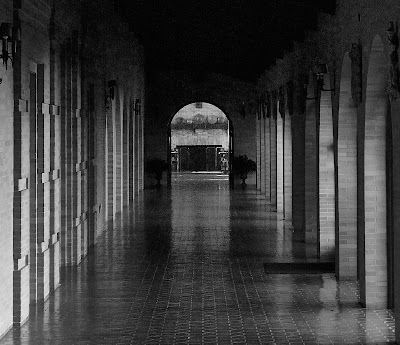2 Kgs 5:14-17
Ps 98 1-4
2 Tm 2:8-13
Lk 17:11-19
The first reading and the Gospel both turn on the disease of leprosy as it was understood in the Ancient Near East. It is crucial to remember that when leprosy is mentioned in any biblical readings it does not mean the chronic disfiguring infectious disease known today as Hansen’s disease. While Hansen’s disease may have been in the population during Jesus’ time, it did not exist during more ancient times, such as that in which the first reading is set, some six centuries before Jesus' birth. Leprosy as understood in the Ancient Near East “infected” walls, clothing, and other inanimate objects as well as humans. Leprosy comes from the Greek root LEPI that means scales of a fish. Thus, something such as psoriasis, with its characteristic scaling lesion, could have been called leprosy, along with many other diseases that are not related and are not infectious. Infectious is the key word. Theories of contagion and infection were millennia in the future.
Fear of leprosy was fear of contagion. It was the fear of disease transmission. Several millennia before antibiotics were discovered leprosy and other contagious diseases were a threat to the ongoing life of the community. Much of the fear was related to a different understanding of illness when compared with our understanding today.
We understand living and disease as part of an unbroken continuum. That line is interrupted only by death. One may be ill but one is still living until the moment of death. In the Ancient Near East disease was understood as a “mild form of death” or “a living death.” The break, the radical interruption, was not between life and death but between health and illness. Lepers were thought to be losing life’s vital force from the sores on their bodies. They were seen as the living dead, as already inhabiting sheol, the abode of the dead.
Adding to the stigma was that, like other illnesses in the Ancient Near East, leprosy was understood as punishment for sin. It was visible evidence that the afflicted was a sinner. The lepers who approached Jesus were suffering in their exclusion from society. They asked Jesus for healing. In his compassion for their suffering, isolation, and self-alienation, Jesus healed them of the visible cause of their suffering. He removed the "leprosy" that visibly marked them as sinners. Jesus returned them to society and gave them back to themselves. Jesus did the same for us. He continues to do the same for us.
Jesus took the burden of our sin upon himself. Through his obedience to the will of the Father, he freed us from sin and death. In the sacrament of confession he offers us the opportunity to be made clean again and again, from the internal disfiguration of “leprosy;” and thus He returns us to right relationship with God and with ourselves. The readings and the Gospel also highlight the interdependence of gift and thanksgiving.
Naaman’s story in the first reading began with verse fourteen, when he descended into the Jordan seven times and emerged healed of his lesions. We didn't hear the important verses that immediately precede these. In those verses Naaman was told by Elisha's messenger, not the Prophet Elisha himself, to bathe in the water of the Jordan seven times. There we read, "But Naaman was angered and walked away. He said, 'I thought he would surely invoke the Lord his God by name and wave his hand toward the spot” curing it. Naaman raged until a servant asked, "if the prophet told you to do something difficult, would you not do it?" The servant pointed out that the prophet had suggested something easy. Logic triumphed over fury. Naaman's gratitude was total, immediate, and sincere.
The gospel adds a twist to healing. Only one of the ten lepers returned to express his gratitude. Only one gave thanks when he realized that he had been healed. The response of the other nine is an important point. It highlights the unfortunate disconnection between faith, gift, and thanksgiving that characterizes people at least some of the time. The ten lepers had faith in Jesus. Otherwise, they would not have set out to present themselves to the priests. But only a Samaritan returned to give thanks.
Faith cannot exist and grow without thanksgiving. Faith is nurtured with prayer, the Eucharist, and meditation upon scripture. Prayer, for its part, is not just for petition in times of trouble. Prayer principally for thanksgiving. It is conversation between us and God that expresses our gratitude for what God has done, for what He is doing, and for what He will do for us, even if we don't understand it at the moment.
The psalm explains it all. First, the psalmist instructs us in the way of faith when he sings:
"All the ends of the earth have seen the salvation by our God."
And then he tells us how to express our gratitude:
"Sing joyfully to the Lord, all you lands, Break into song; sing praise."
________________________________________________________
Some shots from the Trappist Abbey at Spencer, MA, about one hour west of here. I made my final vow retreat there at the end of September 2013, and pronounced vows on 1 October, two days after returning to Boston.
+ Fr. Jack, SJ, MD





No comments:
Post a Comment